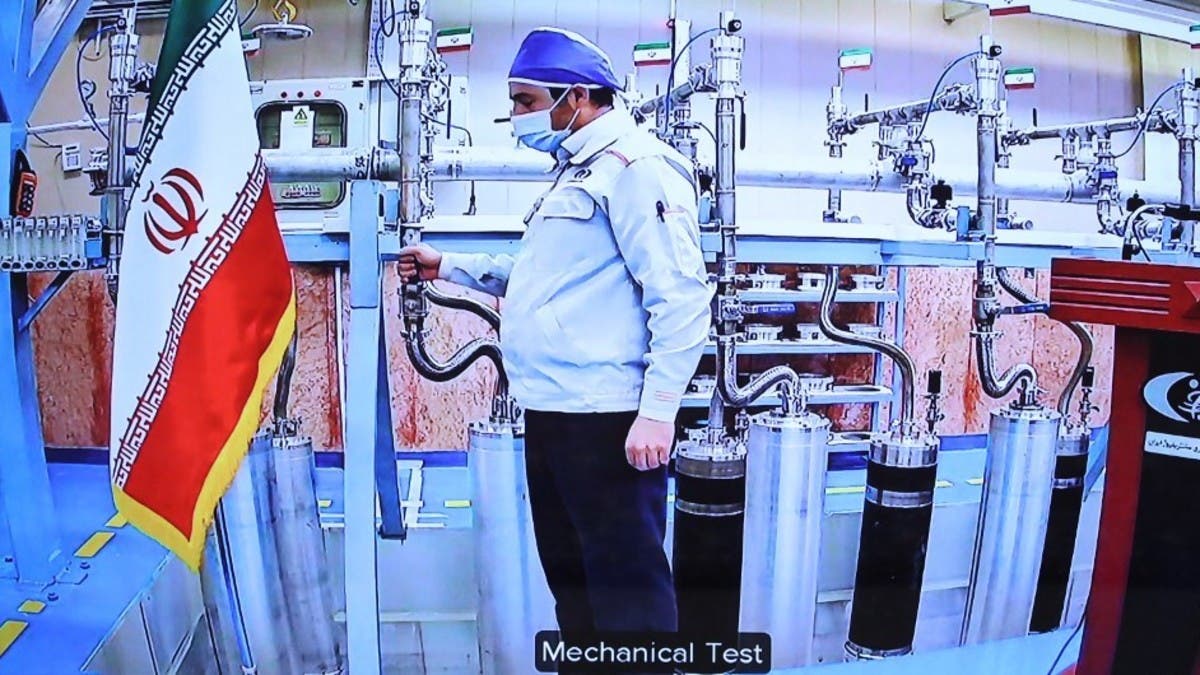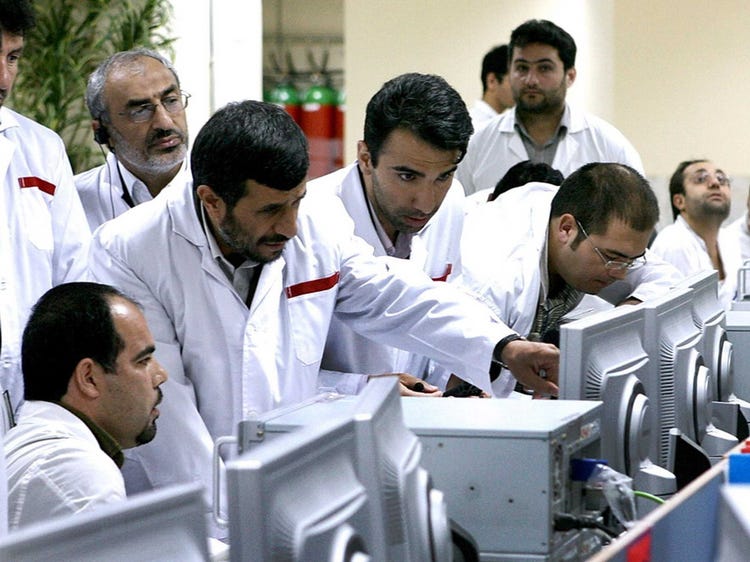Iran has doubled its stock of enriched uranium in less than a month, Atomic Energy Organisation of Iran (AEOI) spokesman Behrouz Kamalvandi said weeks ahead of the resumption of talks with the US and Western allies to revive the abandoned 2015 nuclear deal.
“Our stock is now more than 210 kilograms of uranium enriched to 20 percent, and Iran has 25 kilograms at 60 percent, a level that no country apart from those with nuclear weapons are capable of producing,” state news agency IRNA quoted Kamalvandi as saying.
The head of AEOI, Mohammed Eslami had said in October that Iran has more than 120 kilograms of 20-percent enriched uranium.
Under the abandoned 2015 nuclear deal, Iran was only allowed to enrich uranium up to 3.67 percent, way below the 90 percent required for weapons-grade uranium.
READ ALSO: IRAN: IRGC thwarts US attempt to steal Iranian oil tanker
However, after former US President Donald Trump withdrew from the accord and imposed sanctions on Iran, Tehran began aggressively enriching uranium.
Talks to revive the nuclear deal are set to resume on November 29.
According to a post published April 16, 2021 by The New York Times, Iran has started enriching its uranium supply to 60 percent purity — the closest the country has ever come to the level needed for a weapon — in response to the sabotage of an Iranian nuclear site last weekend linked to Israel.
The move by Iran, reported Friday on state media, made good on threats Iranian officials had announced after the sabotage, which have cast a new cloud over talks to save the 2015 deal limiting Iran’s nuclear abilities in exchange for sanctions relief.
President Hassan Rouhani of Iran has gone further, boasting as those talks resumed in Vienna that his scientists could easily enrich uranium to 90 percent purity — weapons-grade fuel — although he insisted, as Iranian leaders have repeatedly, that Iran “is never seeking to make an atomic bomb.”
So what is the significance of uranium’s purity, which is at the heart of the accord that negotiators are trying to rescue? And why is Iran making these claims? Some basic questions and answers:
What is the goal of uranium enrichment?
Uranium contains a rare radioactive isotope, called U-235, that can be used to power nuclear reactors at low enrichment levels and to fuel nuclear bombs at much higher levels. The goal of uranium enrichment is to raise the percentage levels of U-235, which is often done through the use of centrifuges — machines that spin a form of unrefined uranium at high speeds.
Under the nuclear agreement, known as the Joint Comprehensive Plan of Action, Iran was allowed to keep up to 300 kilograms, or 660 pounds, of uranium enriched to 3.67 percent for civilian nuclear power. Iran also agreed to stop enriching uranium beyond 5 percent and to idle hundreds of centrifuges. Its uranium supply fell far below the amount needed to produce even one bomb.
Why does Iran have more enriched uranium now?
After President Donald J. Trump repudiated the Iran deal in 2018, reimposed economic sanctions on Iran and added other penalties, Iran undertook a graduated series of steps away from compliance with the deal to retaliate — increasing its 3.67 percent uranium supply, adding centrifuges, raising uranium purity in some of the supply to 20 percent and restricting international inspectors’ access to some nuclear sites. All the while, the country said these were easily reversible actions.
What makes the 60 percent enrichment level particularly threatening is that the tricky process of enrichment becomes far easier and requires fewer centrifuges as it moves into the higher purities. In other words, getting to 90 percent purity is much easier starting from 20 percent, and easier still starting from 60 percent.
How much enriched uranium does Iran now possess?
According to the International Atomic Energy Agency, the nuclear-monitoring arm of the United Nations, Iran as of February had amassed 2,967.8 kilograms of uranium — roughly 14 times the limit under the nuclear accord and theoretically enough to power about three atomic bombs if refined to weapons grade. The stockpile includes 17.6 kilograms enriched to 20 percent — also forbidden under the accord until the year 2030.
Did the sabotage last weekend set back Iran’s ability to enrich uranium?
Almost certainly yes. While Iranian officials have given conflicting accounts of the extent of centrifuge damage at Natanz, the sabotaged enrichment complex, at least one has said that several thousand of the machines were destroyed. But Iran also possesses a second known enrichment site, an underground facility called Fordow, that houses roughly 1,000 centrifuges, and some were deployed early this year to enrich uranium to 20 percent.
Nuclear experts estimate that to enrich uranium at 20 percent purification level to 60 percent, Iran would need to devote approximately 500 centrifuges to that job. It would need about 100 more of the spinning machines to further raise the purification level to 90 percent.
In an interview, Olli Heinonen, a former chief inspector for the International Atomic Energy Agency, said Iran in theory might go from 60 percent to 90 percent enrichment in a week, compared with a month or so in moving up from 20 percent.
“It’s not a huge difference. At this point, this is a demonstration,” he said of Iran’s 60 percent enrichment threat. “They want to show that they can do it.”
Does this mean Iran could produce a bomb in a week?
No. It is far more difficult, Dr. Heinonen and others said, to turn 90 percent-enriched uranium into the core of an atomic bomb. That could take months. And such an estimate does not include the technology, testing and time needed to fit the weapon onto a missile warhead, which could take far longer.
Why would Iran hint at such capabilities?
The threat of militarizing its nuclear capabilities has always been a tool of negotiation used by Iran — both in the talks that led to the 2015 agreement and the current negotiations. At the same time, Tehran has made clear that it wants to reach a deal that would end the onerous American sanctions, which severely hamper Iran’s oil sales and international financial transactions. This partly explains Iran’s reluctance to retaliate militarily for attacks on its nuclear sites.
“Iran views itself as a boxer in the ring,” said Mehrzad Boroujerdi, an Iran expert who is a professor and director of the School of Public and International Affairs at Virginia Tech. “It is getting punched left and right, without the ability to do damage to the other side.”
With the 60 percent enrichment, Mr. Boroujerdi said, Iran’s leaders “are trying to resort to any aces they may have.”














